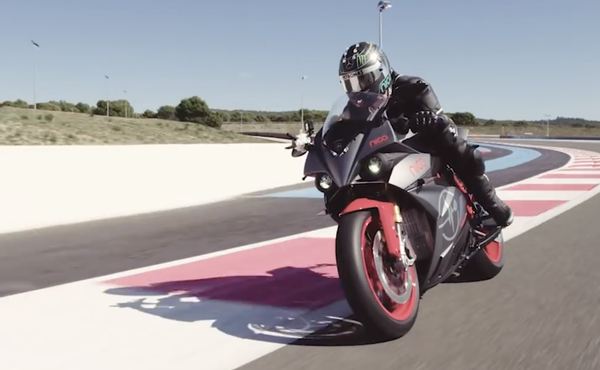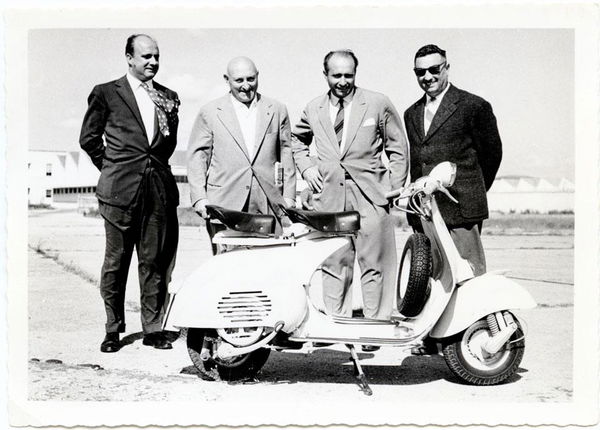Energica Interview | The future of electric motorcycles
Visordown talked with Energica’s top brass to get an idea of how the premium electric motorcycle brand is evolving in these changing times

ENERGICA has gone from strength to strength in the last few years, from becoming the first FIM endorsed one-make electric motorcycle world championship manufacturer, to matching its 2019 sales in just eight weeks in 2021.
And the company isn’t stopping there. Earlier this year Energica and Ideanomics penned a deal worth 11m Euro, as the American tech giant bought a 20% stake in the premium electric motorcycle brand.
The deal is hoped to help supercharge Energica’s growth globally, using Ideanomics experience in the adoption of EVs, particularly in the fleet operations sector.
To get the inside line on the deal and how it’s going to help shape Enegica’s future, we sat down for a chat with Livia Cevolini, Enegica’s CEO, and Ethan Walfish, from Ideanomics, to find out more.

More than just electric motorcycles from Energica?
Livia Cevolini:
For us, it is good as Ideanomics is not just an investor, yes, of course, they are an investor and very important. But they are also strategic for us, we are already working on some new projects together with them. I see this as a much bigger picture, a much bigger project.
It is not just about Energica alone, but an environment that we are creating together with them and other companies.
In the beginning, we [Energica] were going a little too fast, actually. Because we were in front of all the others [EV motorcycle manufacturers] and when you are out in front, all the others are chasing you, and if you don’t have enough investment, you will get overtaken, despite still being the best.
Visordown:
So, Ethan, from your side how easy was it to put pen to paper and sign the deal with Energica?
Ethan Walfish
For us, it is nearly too good to be true. Ideanomics is trying to build a platform for EV, just to be able to partner with them and help build up the two-wheeler segment. To take that battery technology, maybe leverage it in other places… It really gives us the benefit to take high-end technology a leader in the market and apply that to other places. It gives us broader exposure to the European market as well. Overall, we are excited to be working with Livia and the team and see where this partnership goes.

Visordown:
So, is it fair to say that there is more to this relationship between you both than just electric motorcycles?
Livia:
Who knows?!
Visordown:
I’ll take that as a maybe…
Europe is now considered to be one of the most important markets for EVs and it also seems to be a global centre for EV tech, we have Triumph, Harley-Davidson, Kawasaki, all joining the electric motorcycle field.
How does that make you feel as the market leader in two-wheeled premium electric motorcycles?
Livia:
It’s exactly what happened to Tesla when you are alone, you have no competition, but the market is very small. When you are alone, you aren’t a real market. When you start to have competitors, the final users realise it is becoming a real market and it begins to grow much quicker.
Petrol motorcycles have many brands and big sales, in the electric market, there is room for anyone, and we are the leaders now. The goal here is to keep the leadership and to stay in that position, so once the market grows, we keep the same percentage of this larger segment.
Then together with Ideanomics, we can have a bigger slice of the cake as we can work in other kinds of vehicles, sectors and segments of the same market.

Recharging in 15-minutes is ‘just around the corner’…
Visordown:
A lot of Visordown’s readers are waiting for this tipping point where the range of an electric bike and the recharge time is on a par with a petrol motorcycle – 140-miles and recharging in 10-15 minutes. We aren’t quite there yet, how far off are we?
Giampiero Testoni – Chief Technical Officer – Energica:
From a technical point of view, charge, and range, let’s say that charging, we believe we were one of the first to believe in fast charging. Of course, there was already a Japanese standard, but we were the first to start on a European standard, enabling charging to 80 percent in half an hour. In real use, when you stop for refuelling, you go and drink some coffee, 20-minutes, it’s very easy to reach that target.
The technology for rapid charging is already there, the battery cells that are already capable to charge in 15-minutes, some technology for seven to ten minutes. The 15-minutes to 85% is just around the corner. And then the refuelling in five minutes to recharging in 15-minutes, the difference then is very small.
And on the other side, range. On a motorcycle, you can’t have that huge space for batteries. Now we have the 21.5kWh batteries, this is very close to what a petrol motorcycle does in real use.












